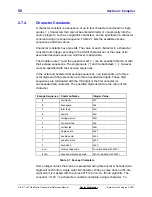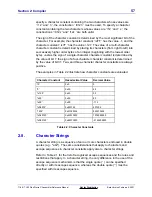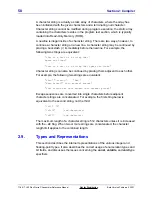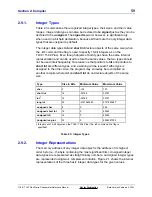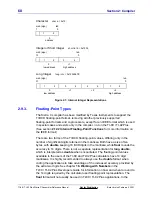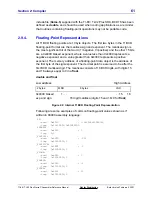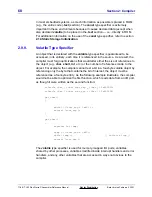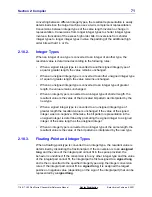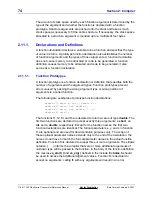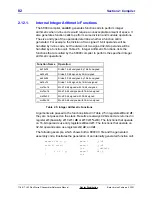
68
Section 2: Compiler
TI
-
89 / TI
-
92 Plus Sierra C Assembler Reference Manual
Not for Distribution
Beta Version February 2, 2001
In most embedded systems, as much information as possible is placed in ROM
(e.g., the entire code (.text) section). The const type specifier is extremely
important in these environments because it causes declared data (except when
also declared volatile) to be placed in the .text section — i.e., directly in ROM.
For additional information on the use of the const type specifier, refer to section
2.14 Static Storage Initialization.
2.9.9.
Volatile Type Specifier
An object that is declared with the volatile type specifier is guaranteed to be
accessed, in its entirety, each time it is referenced in the source. As a result, the
compiler must forgo optimizations that would alter either the size of references to
the object (e.g., char, short, int, etc.) or the number of references made to the
object. For example, the compiler cannot test a bit in a four-byte volatile object by
referencing only the byte that contains the bit of interest; the object must be
referenced as a four-byte entity. As the following example illustrates, the compiler
would not be able to optimize the first function, which reads data from an I/O port,
as though it were written as the second function:
volatile char * const stat_reg = (char *) 0x60000D;
volatile char * const rcvr_reg = (char *) 0x60000F;
get_char()
{
while( !(*stat_reg & 0x40) );
return( *rcvr_reg );
}
get_char()
{
register int temp;
temp = !(*stat_reg & 0x40);
while( temp );
/* infinite loop */
return( *rcvr_reg );
}
The volatile type specifier is used for memory-mapped I/O ports, variables
shared by other processes, variables modified inside interrupt handlers and error
handlers, and any other variables that are accessed in ways not obvious to the
compiler.



